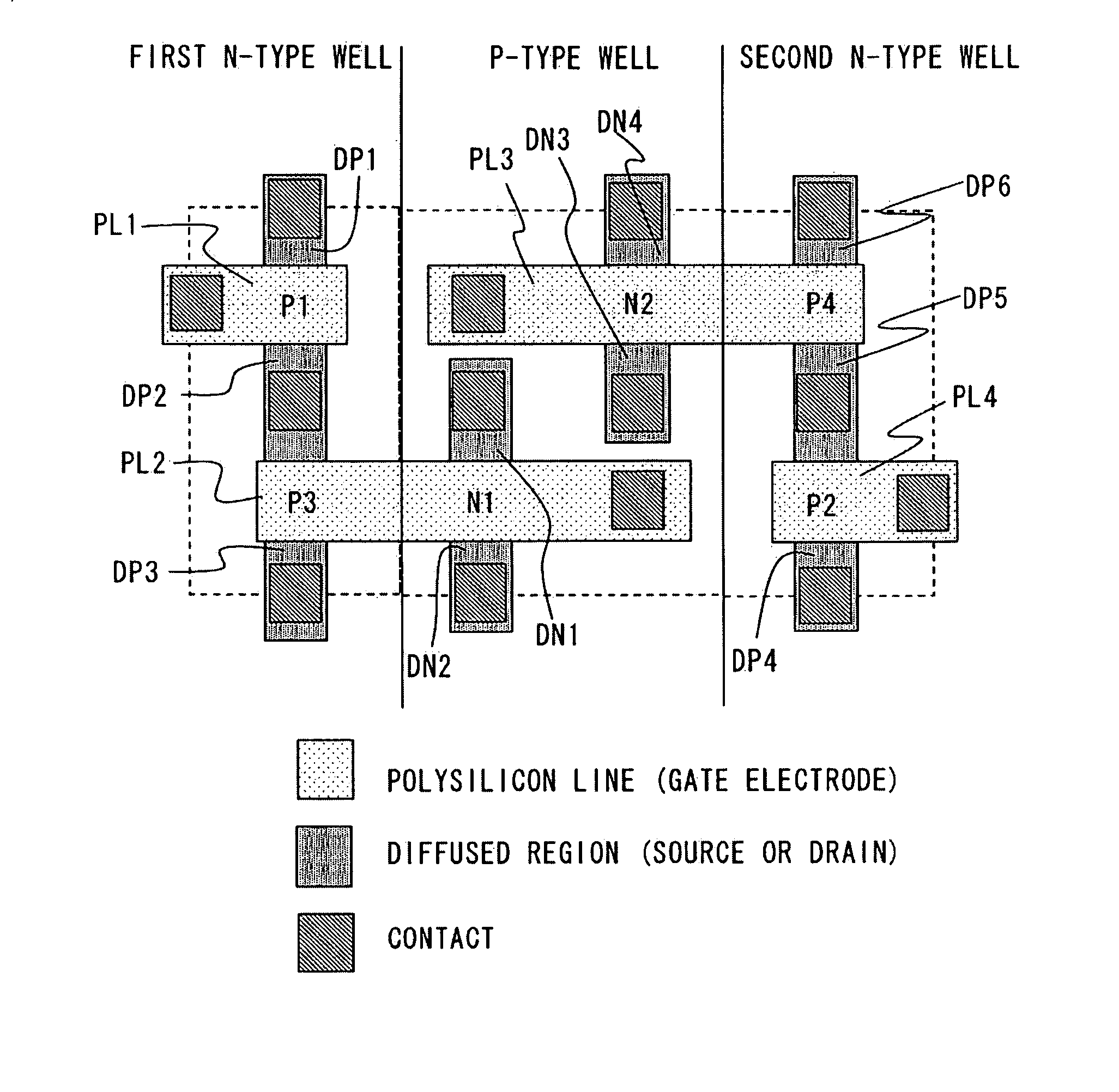Semiconductor integrated circuit
a technology of integrated circuits and semiconductors, applied in the field of semiconductor integrated circuits, can solve the problems of reducing snm, multi-bit error in which a plurality of cells generate an error simultaneously, inversion of logical data stored in memory cells, etc., and achieve the effect of improving processing accuracy and soft error toleran
- Summary
- Abstract
- Description
- Claims
- Application Information
AI Technical Summary
Benefits of technology
Problems solved by technology
Method used
Image
Examples
Embodiment Construction
[0022] The invention will be now described herein with reference to illustrative embodiments. Those skilled in the art will recognize that many alternative embodiments can be accomplished using the teachings of the present invention and that the invention is not limited to the embodiments illustrated for explanatory purposed.
[0023] An embodiment of the present invention is described hereinafter with reference to the drawings. FIG. 1 is a circuit diagram showing a CMOS type SRAM memory cell according to this embodiment. The SRAM memory cell of this embodiment includes NMOS driver transistors N1 and N2, PMOS transfer transistors P1 and P2, and PMOS load transistors P3 and P4.
[0024] The load transistor P3 and the driver transistor N i are connected in series between a power supply Vcc and a ground potential GND. The load transistor P4 and the driver transistor N2 are connected in series between a power supply Vcc and a ground potential GND. The load transistor P4 and the driver trans...
PUM
 Login to View More
Login to View More Abstract
Description
Claims
Application Information
 Login to View More
Login to View More - R&D
- Intellectual Property
- Life Sciences
- Materials
- Tech Scout
- Unparalleled Data Quality
- Higher Quality Content
- 60% Fewer Hallucinations
Browse by: Latest US Patents, China's latest patents, Technical Efficacy Thesaurus, Application Domain, Technology Topic, Popular Technical Reports.
© 2025 PatSnap. All rights reserved.Legal|Privacy policy|Modern Slavery Act Transparency Statement|Sitemap|About US| Contact US: help@patsnap.com



